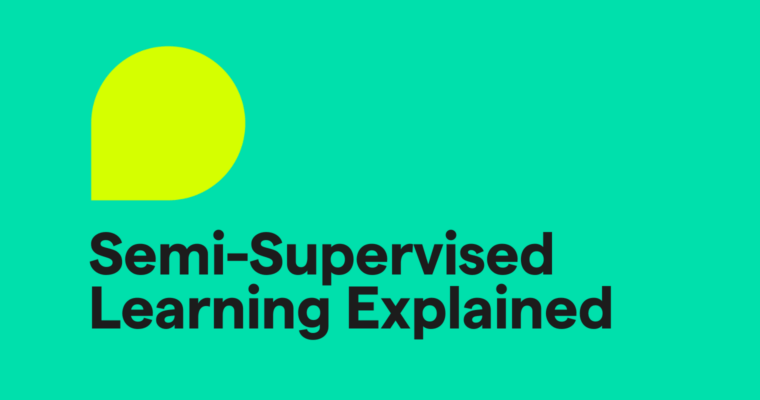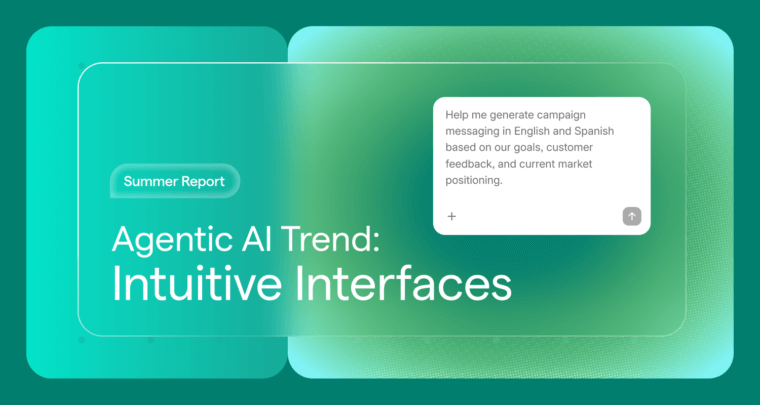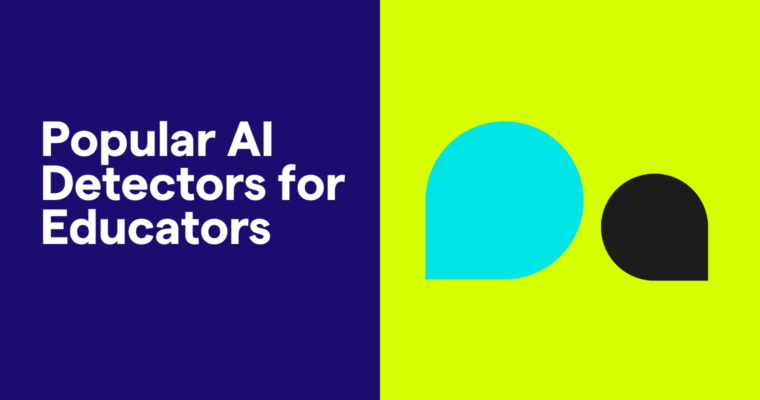
In the realm of machine learning, semi-supervised learning emerges as a clever hybrid approach, bridging the gap between supervised and unsupervised methods by leveraging both labeled and unlabeled data to train more robust and efficient models.
Table of contents
What is semi-supervised learning?
Semi-supervised vs. supervised and unsupervised learning
How semi-supervised learning works
Types of semi-supervised learning
Applications of semi-supervised learning
Advantages of semi-supervised learning
Disadvantages of semi-supervised learning
What is semi-supervised learning?
Semi-supervised learning is a type of machine learning (ML) that uses a combination of labeled and unlabeled data to train models. Semi-supervised means that the model receives guidance from a small amount of labeled data, where inputs are explicitly paired with correct outputs, plus a larger pool of unlabeled data, which is typically more abundant. These models typically find initial insights in a small amount of labeled data, and then further refine their understanding and accuracy using the larger pool of unlabeled data.
Machine learning is a subset of artificial intelligence (AI) that uses data and statistical methods to build models that mimic human reasoning rather than relying on hard-coded instructions. Leveraging elements from supervised and unsupervised approaches, semi-supervised is a distinct and powerful way to improve prediction quality without onerous investment in human labeling.
Semi-supervised vs. supervised and unsupervised learning
While supervised learning relies solely on labeled data and unsupervised learning works with entirely unlabeled data, semi-supervised learning blends the two.
Supervised learning
Supervised learning uses labeled data to train models for specific tasks. The two major types are:
- Classification: Determines which class or group an item belongs to. This can be a binary choice, a choice among multiple options, or membership in multiple groups.
- Regression: Predicts results based on a best-fit line from existing data. Typically used for forecasting, such as predicting weather or financial performance.
Unsupervised learning
Unsupervised learning identifies patterns and structures in unlabeled data through three primary techniques:
- Clustering: Defines groups of points that have similar values. These can be exclusive (each data point in exactly one cluster), overlapping (degrees of membership in one or more clusters), or hierarchical (multiple layers of clusters).
- Association: Finds which items are more likely to co-occur, such as products frequently purchased together.
- Dimensionality reduction: Simplifies datasets by condensing data into fewer variables, thereby reducing processing time and improving the model’s ability to generalize.
Semi-supervised learning
Semi-supervised learning leverages both labeled and unlabeled data to improve model performance. This approach is particularly useful when labeling data is expensive or time-consuming.
This type of machine learning is ideal when you have a small amount of labeled data and a large amount of unlabeled data. By identifying which unlabeled points closely match labeled ones, a semi-supervised model can create more nuanced classification boundaries or regression models, leading to improved accuracy and performance.
How semi-supervised learning works
The semi-supervised learning process involves several steps, combining elements of both supervised and unsupervised learning methods:
1 Data collection and labeling: Gather a dataset that includes a small portion of labeled data and a larger portion of unlabeled data. Both datasets should have the same features, also known as columns or attributes.
2 Pre-processing and feature extraction: Clean and preprocess the data to give the model the best possible basis for learning: Spot-check to ensure quality, remove duplicates, and delete unnecessary features. Consider creating new features that transform important features into meaningful ranges that reflect the variation in the data (e.g., converting birth dates into ages) in a process known as extraction.
3 Initial supervised learning: Train the model using the labeled data. This initial phase helps the model understand the relationship between inputs and outputs.
4 Unsupervised learning: Apply unsupervised learning techniques to the unlabeled data to identify patterns, clusters, or structures.
5 Model refinement: Combine the insights from labeled and unlabeled data to refine the model. This step often involves iterative training and adjustments to improve accuracy.
6 Evaluation and tuning: Assess the model’s performance using standard supervised learning metrics, such as accuracy, precision, recall, and F1 score. Fine-tune the model by adjusting explicit instructions (known as hyperparameters) and re-evaluating until optimal performance is achieved.
7 Deployment and monitoring: Deploy the model for real-world use, continuously monitor its performance, and update it with new data as needed.
Types of semi-supervised learning
Semi-supervised learning can be implemented using several techniques, each leveraging labeled and unlabeled data to improve the learning process. Here are the main types, along with sub-types and key concepts:
Self-training
Self-training, also known as self-learning or self-labeling, is the most straightforward approach. In this technique, a model initially trained on labeled data predicts labels for the unlabeled data and records its degree of confidence. The model iteratively retrains itself by applying its most confident predictions as additional labeled data—these generated labels are known as pseudo-labels. This process continues until the model’s performance stabilizes or improves sufficiently.
- Initial training: The model is trained on a small labeled dataset.
- Label prediction: The trained model predicts labels for the unlabeled data.
- Confidence thresholding: Only predictions above a certain confidence level are selected.
- Retraining: The selected pseudo-labeled data is added to the training set, and the model is retrained.
This method is simple but powerful, especially when the model can make accurate predictions early on. However, if the initial predictions are incorrect, it can be prone to reinforcing its own errors. Use clustering to help validate that the pseudo-labels are consistent with the natural groupings within the data.
Co-training
Co-training, typically used for classification problems, involves training two or more models on different views or subsets of the data. Each model’s most confident predictions on the unlabeled data augment the training set of the other model. This technique leverages the diversity of multiple models to improve learning.
- Two-view approach: The dataset is divided into two distinct views—that is, subsets of the original data, each containing different features. Each of the two new views has the same label, but ideally, the two are conditionally independent, meaning that knowing the values in one table wouldn’t give you any information about the other.
- Model training: Two models are trained separately on each view using the labeled data.
- Mutual labeling: Each model predicts labels for the unlabeled data, and the best predictions—either all those above a certain confidence threshold or simply a fixed number at the top of the list—are used to retrain the other model.
Co-training is particularly useful when the data lends itself to multiple views that provide complementary information, such as medical images and clinical data paired to the same patient. In this example, one model would predict the incidence of disease based on the image, while the other would predict based on data from the medical record.
This approach helps reduce the risk of reinforcing incorrect predictions, as the two models can correct each other.
Generative models
Generative models learn the likelihood of given pairs of inputs and outputs co-occurring, known as joint probability distribution. This approach lets them generate new data that resembles what it’s already seen. These models use labeled and unlabeled data to capture the underlying data distribution and improve the learning process. As you might guess from the name, this is the basis of generative AI that can create text, images, and so on.
- Generative adversarial networks (GANs): GANs consist of two models: a generator and a discriminator. The generator creates synthetic data points, while the discriminator tries to distinguish between these synthetic data points and real data. As they train, the generator improves its ability to create realistic data, and the discriminator becomes better at identifying fake data. This adversarial process continues, with each model striving to outperform the other. GANs can be applied to semi-supervised learning in two ways:
- Modified discriminator: Instead of simply classifying data as “fake” or “real,” the discriminator is trained to classify data into multiple classes plus a fake class. This enables the discriminator to both classify and discriminate.
- Using unlabeled data: The discriminator judges whether an input matches the labeled data it has seen or is a fake data point from the generator. This additional challenge forces the discriminator to recognize unlabeled data by its resemblance to labeled data, helping it learn the characteristics that make them similar.
- Variational autoencoders (VAEs): VAEs figure out how to encode data into a simpler, abstract representation that it can decode into as close a representation of the original data as possible. By using both labeled and unlabeled data, the VAE creates a single abstraction that captures the essential features of the entire dataset and thus improves its performance on novel data.
Generative models are powerful tools for semi-supervised learning, particularly with abundant yet complex unlabeled data, such as in language translation or image recognition. Of course, you need some labels so the GANs or VAEs know what to aim for.
Graph-based methods
Graph-based methods represent data points as nodes on a graph, with different approaches for understanding and extracting useful information about the relationships between them. Some of the many graph-based methods applied to semi-supervised learning include:
- Label propagation: A relatively straightforward approach where numerical values known as edges indicate similarities between nearby nodes. On the first run of the model, unlabeled points with the strongest edges to a labeled point borrow that point’s label. As more points get labeled, the process is repeated until all points are labeled.
- Graph neural networks (GNNs): Uses techniques for training neural networks, such as attention and convolution, to apply learnings from labeled data points to unlabeled ones, particularly in highly complex situations such as social networks and gene analysis.
- Graph autoencoders: Similar to VAEs, these create a single abstracted representation that captures labeled and unlabeled data. This approach is often used to find missing links, which are potential connections not captured in the graph.
Graph-based methods are particularly effective for complex data that naturally forms networks or has intrinsic relationships, such as social networks, biological networks, and recommendation systems.
Applications of semi-supervised learning
Some of the many applications of semi-supervised learning include:
- Text classification: When you have a very large set of available data, such as millions of product reviews or billions of emails, you only need to label a fraction of them. A semi-supervised approach will use the remaining data to refine the model.
- Medical image analysis: Medical experts’ time is expensive, and they’re not always accurate. Supplementing their analysis of imagery such as MRIs or X-rays with many unlabeled images can lead to a model that equals or even surpasses their accuracy.
- Speech recognition: Manually transcribing speech is a tedious and taxing process, especially if you are trying to capture a wide variety of dialects and accents. Combining labeled speech data with vast amounts of unlabeled audio will improve a model’s ability to accurately discern what’s being said.
- Fraud detection: First, train a model on a small set of labeled transactions, identifying known fraud and legitimate cases. Then add a larger set of unlabeled transactions to expose the model to suspicious patterns and anomalies, enhancing its ability to identify new or evolving fraudulent activities in financial systems.
- Customer segmentation: Semi-supervised learning can improve the precision by using a small labeled dataset to define initial segments based on certain patterns and demographics, then adding a larger pool of unlabeled data to refine and expand these categories.
Advantages of semi-supervised learning
- Cost-effective: Semi-supervised learning reduces the need for extensive labeled data, lowering labeling costs and effort as well as the influence of human error and bias.
- Improved predictions: Combining labeled and unlabeled data often results in better prediction quality compared to purely supervised learning, as it provides more data for the model to learn from.
- Scalability: Semi-supervised learning is a good fit for real-world applications in which thorough labeling is impractical, such as billions of potentially fraudulent transactions, because it handles large datasets with minimal labeled data.
- Flexibility: Combining the strengths of supervised and unsupervised learning makes this approach adaptable to many tasks and domains.
Disadvantages of semi-supervised learning
- Complexity: Integrating labeled and unlabeled data often requires sophisticated pre-processing techniques such as normalizing data ranges, imputing missing values, and dimensionality reduction.
- Assumption reliance: Semi-supervised methods often rely on assumptions about the data distribution, like data points in the same cluster meriting the same label, which may not always hold true.
- Potential for noise: Unlabeled data can introduce noise and inaccuracies if not handled properly with techniques such as outlier detection and validating against labeled data.
- Harder to evaluate: Without much labeled data, you won’t get much useful information from the standard supervised learning evaluation approaches.






